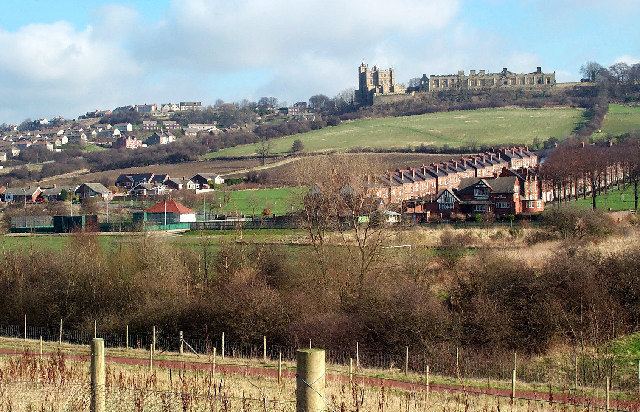OS grid reference SK465703 Post town BOLSOVER Local time Saturday 5:33 AM | Sovereign state United Kingdom Postcode district S44 | |
 | ||
Weather -1°C, Wind NE at 8 km/h, 99% Humidity | ||
changing new bolsover model village
New Bolsover model village is a village adjoining the town of Bolsover in Derbyshire.
Contents
- changing new bolsover model village
- Map of New Bolsover Bolsover Chesterfield UK
- History
- Architecture
- References
Map of New Bolsover, Bolsover, Chesterfield, UK
History
The pit village was begun in 1891 by the Bolsover Mining Company. It is a model village built by philanthropic colliery owners to benefit and improve the lives of workers at Bolsover Colliery.
The architects for the village were Arthur Brewill and Basil Baily of Nottingham.
The village had a school and a Cooperative store. On the edge of the village were allotments, pig sties and the village cricket pitch. The village had no public houses but institute served workers with no more than three glasses of beer a day. The colliery company employed a policeman and anti-social behavior could result in fines or dismissal.
The 'Model' as it is known locally was completed in 1896 by the Bolsover Colliery Company. It had 200 houses for miners and colliery officials. A tram track round the back of the village linked it to the pit and coal was delivered directly from the colliery to the coal store behind each house and carried away the contents of the ash privies. The 'Model' remains in good repair and its houses are either privately owned or owned by the local authority.
Architecture
The village houses are built in a double horseshoe around a village green. Two-storey cottages with attics were built in terraces of eight in red brick with a decorative first floor band and saw tooth eaves cornices. Their Welsh slate roofs have decorative ridge cresting. Each house has three-light casement windows in ashlar surrounds and a doorway with ashlar lintels and an overlight. The first floors have two-light casement windows under chamfered ashlar lintels. Gabled dormers to the attics have two-light casements with small panel glazing. Similar two-storey cottages were built without dormers to their attics. All the houses have back yards enclosed by brick walls. The village houses are grade II listed buildings.
